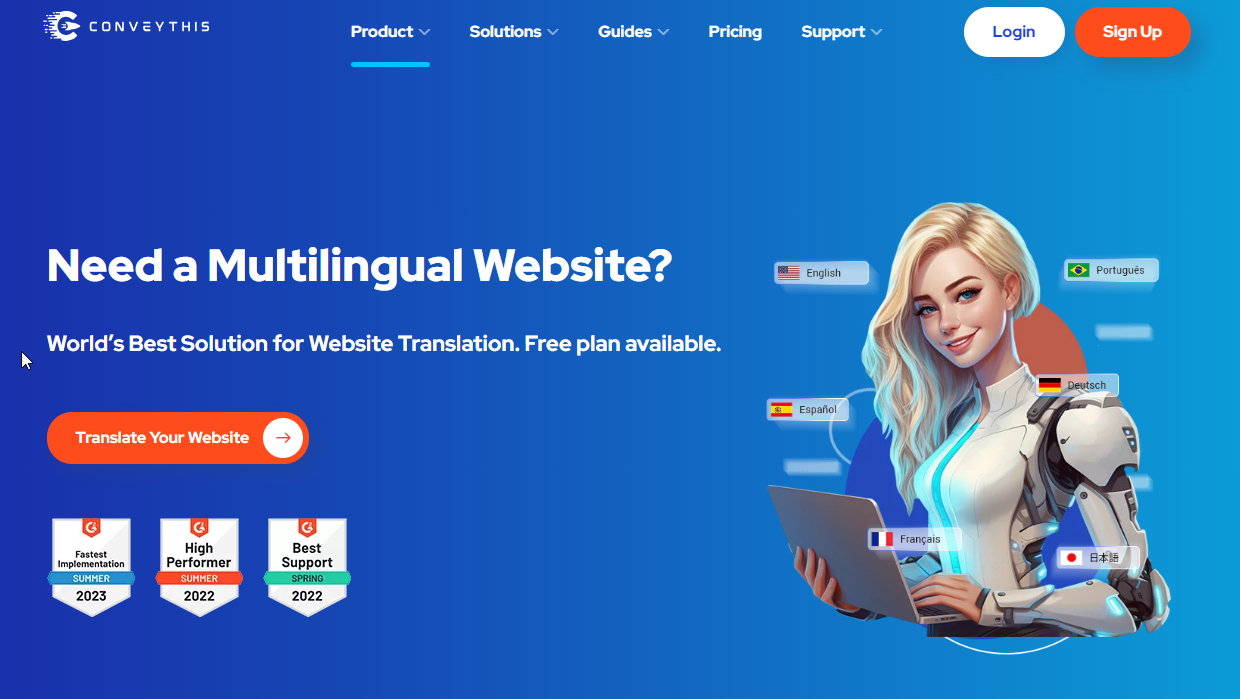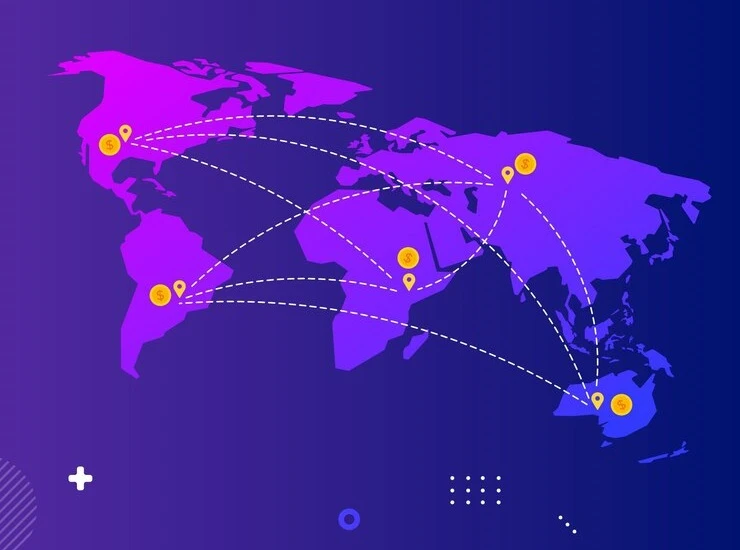Ten Best Practices That Will Help You Get Website Localization Right with ConveyThis
In the past when it used to be very difficult for brands to reach many people, nowadays reaching several audience is quite easier. Statements like ‘the world is yours’, ‘all opportunities are open’, ‘you can do anything or go anywhere’ etc. are now true more than ever before.
One thing is to gain access to different markets around the world, another thing is to get connected with a specific market especially when the market uses a foreign language.
Research has often reveals that about 40% of online shoppers will not patronize a product that is on a website that does not use their language. Imagine what you will be missing out on if you are to sell products in such market without the use of appropriate language.
When you hear the word ‘localization’, you might have started thinking about translation. However, localization is more than just translation. It specifically means creating and building a specialized user experience for each user of your website by considering their backgrounds and locality.
That is why in this article, we will be discussing ten (10) best practices that will help you actualize the right website localization.
1. Make extensive research about your targeted market: it is always said that “Customers are always right even when they are wrong”. This is because they know what they want and they are right about the choices they make having a look at it from their own perspective.
One thing you should be especially conscious of the tendency to assume. It is easy to fail woefully if brands base their decisions on mere assumptions. It is even worse to assume when you are venturing into new markets with new locations and cultures that have clear differences in lifestyle and interests.
So, immerse yourself in extensive research and gather sufficient information about the targeted market. Be sure that what you are planning to offer them is what the need and not what they want. Having coming to know what their needs are, the next thing you should research is your potential competitors in that market destination. With that, you will be able to realize what and what strategies are working in that area and which strategy is best to use so that you can dominate the market.
2. Multiple language SEO: be aware of who your product users are. Knowing them will make localization easier. You will be able to reach the hearts of your audience only when you are able to perceive their intentions by analyzing who they are, the products they choose, how they receive messages, and what marketing strategy they are prone to fall for.
This is where SEO comes into play. That is generating traffic naturally on your website through results of web search. To achieve such traffic for your website, it is important that your translated website goes in line with what the shoppers in the targeted location are likely to search for. This is where you have to be a little bit more careful because certain keyword for destination A may not be the right keyword for destination B regardless of whether you are talking about the same product or not.
With a localized SEO, your website will come to fore in new market. However, when it is not properly done, don’t be surprise that you will be nowhere to be found among the list of results that appear because they used the right local keywords.
3. Adjust appropriately with cultural Differences: if you want to be successful in the new market location, you must be culturally informed and culturally sensitive. Without these, you won’t even be able to have the right website localization. When you are aware of the cultural differences, you won’t have things that will be termed offensive or embarrassing by your users on your website.
This may be somehow funny because what is appropriate in this location may be inappropriate in that location. To avoid awkwardness, it will be best to check over and over again all cultural references that can be found on your website and make sure they are right for the market you are targeting.
It may be wise to invite professional human translators from that region of the targeted market to go through what has been translated. Such translators have the ability to swiftly detect and determine contents that are suitable or not suitable for the local market.
4. Allow users the option of switching between languages: majority of people, although well versed in English language, still prefer to be offered greetings in their local language. When users have the option of switching from one language to the other, they tend to enjoy their browsing experience on your website.
Although translation is not all that localization is but it plays a big role when trying to achieve the best form of website localization.
5. Build multilingual brand assets: your websites shouldn’t be your only asset. Your website should be interactive and engaging so that visitors can have an enjoyable and engaging time. There should be several things visitors can interact with on your website. It will be fascinating to have tones, voices and style guides created for each of the various locations you have in mind. Make sure that all downloadable contents such as reports, eBooks, project papers etc. are well translated.
This is not to mean that you must create your brand from scratch at all time that you are entering into a new market location. Rather than doing that, it is best to create contents bits by bits with targeted location in mind as this we let your brand maintain consistency around the globe.
6. Make use of a website translation tool: instead of complicating your website localization process, you need to only handle the basics in the best possible way as well as in the preferred language and the format of the location of interest.
From there, you can standardize things with website translation tool that are especially designed for the sole purpose of website translation. When you use these tools, it will help you simplify your website translation process and help you automates the process.
7. Localize your website media: other than translations of the words on your website, there are things that needs attention. The images, videos, infographics, and graphics on your web page should be localized. It will reflect better on your brand if these media components of your website are available in a form that the visitors can relate to. Ensure that the website media is aligned and tailored with the needs and language of the new markets. This will draw new buyers to your brand.
8. Keep your website design in mind when localizing: it will be fine and nice if your translated contents are pure and is a word for word rendering of the source material. However, that is not always the best approach. The reason is that the sentences and paragraphs in the corresponding language will never be of the same length and this will eventually affect how texts and other website contents will appear in each of the languages.
Build responsive web pages that can adapt to any change that might occur in the course of the translation into other languages. Importantly, be careful with buttons that are call-to-actions as they tend to be victims of truncation.
9. Consider the variations in local language: when translating, you should not only focus on translating the words correctly but must also be very conversant with local practices like date and time formats.
For example, the Americans and British both speak English language. Yet, the way each writes out dates differs. The British form has the day first and followed by the month. This is not the case with the American style that has month as the first, before the day.
Little, little things like these can make a huge difference as it will let the visitors feel relax browsing through your website.
10. Continually engage in testing: it takes time to get localization right. Especially if you are working on new markets in areas you are not quite familiar with beforehand. What you have to continue doing is testing. Test, test and test over again. Testing will help you to realize areas that needed adjustments and then you can adjust them accordingly. When you do this, visitors will witness enjoyable experience on your website.
Be at alert and keep tab on which of your products is more appealing to the audience in your new market location, make a test of new words and evaluate your outcomes consistently.
You can successfully reach your new market. Unlike before, you no longer need to bother yourself with the problems of land borders because with the advent of internet you can turn different people from different locations with different background to prospective customers.
Remember the key is right localization process. It is not all about translating your web contents but it has to do with creating unique enjoyable experience for visitors of your website.
Begin to put in place the website localization practices that have been mentioned in this article to help you get to know your new audiences and what they will likely expect from your brand. When you apply all that has been treated in this article, you will be able to create and nice and wonderful browsing and shopping experience for anyone regardless of their location in the world.
With ConveyThis, you will be able to learn how you can speed up your website localization project.
Translation, far more than just knowing languages, is a complex process.
By following our tips and using ConveyThis , your translated pages will resonate with your audience, feeling native to the target language.
While it demands effort, the result is rewarding. If you’re translating a website, ConveyThis can save you hours with automated machine translation.
Try ConveyThis free for 7 days!



